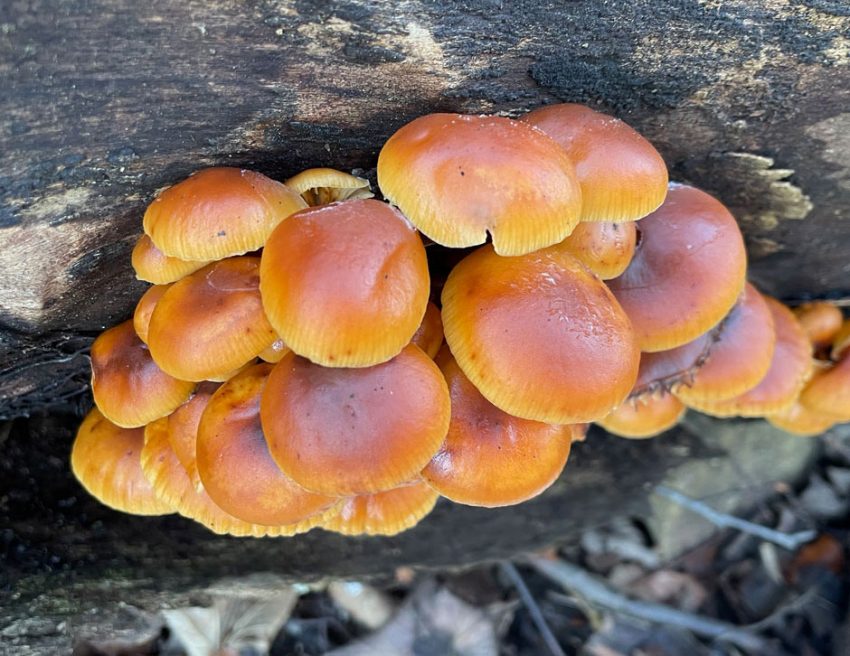If you’ve recently got interested in foraging, or lockdown is getting to you, don’t wait for the Spring to start foraging. Here are some good reasons to get outside…
With all the food available in the supermarkets, just what is the point of foraging? Well, I can think of quite a few:
1. The Pleasure
Foraging is fun! I can’t think of anything I’d rather do than spend a few hours on a fresh or sunny day, loitering about in the woods or hedgerows, or along a seashore, looking for wild food. You lose track of time, feel at peace, forget to constantly check your phone, get exercise, are constantly learning and discovering, and you fall deeply in love with the countryside around you.
2. The Taste
There are some incredible flavours out there in the wild. Mushrooms that taste of curry or aniseed, seaweeds that taste of pepper or marmite, tiny plants that pack a powerful punch of flavour from cloves to cherry. The range is breathtaking!
3. The Health Benefits
Until you start foraging you don’t really realise how impoverished our western diet has become. Did you know that 50% of the world populations daily diet comes from just three species: wheat, corn and rice? I ate somewhere around 150 to 200 species of plants and fungi last year. Variety is the spice of life but also many of the vitamins and minerals in many wild foods out-perform supermarket vegetables. A dandelion leaf has three times the Vitamin A of spinach, plus plenty of potassium. Nettle tops are high in iron. Most contain vitamin C, especially the cresses, but wild violet leaves have five times the vitamin C that an orange has (per 100 grams). However, there are also many beneficial properties that we don’t even realise we are missing as nearly every plant also has health and medicinal benefits too. Foraged food is also the freshest by far.
4. Low Food Miles
Foraging is the best way to eat local and lower your food miles and carbon footprint. Combine that with a weekly visit to a farmers market or a local veggie box scheme and you’re doing our beautiful planet a favour too. Supermarket food often travels thousands of miles to get to a grocery store and unless you’re buying local and organic, you are often supporting farming practices that cost the earth in use of chemicals, deforestation, soil degradation, river diversion and alienating local people from their own land. Change that one foraged leaf at a time!
So how do you advise that people get started?
I’m often asked if foraging is hard to learn. “With so many plants and fungi out there will I remember them all? Could I poison myself?”
I always tell people on my courses that if you can tell the difference between a cabbage and a lettuce then you do have the mental capacity to learn the differences between types of mushrooms and herbs
My advice is just learn one new plant or mushroom a week – in two years you’ll know another 100 species.
The week that you dedicate to a plant, learn everything about it – including any possible dangerous lookalikes. Pick it, press it, draw it, smell, feel, touch and taste (if edible!). Learn where it likes to grow, look for it, find it. Talk to it, listen to it, or just sit and hang out with it!
As you learn each one you’ll find that one by one your eye improves. You start to see shape and colour, serrated or plain edges, succulence, delicacy, the feel of the square stem of those in the mint family, the dry taste of tannins. Your learning speed will start to increase. But you have to learn through being out there.
Learning from books teaches you only so much. It can never impart touch, texture, smell, taste, aura, mood. These you only learn by being there. Go out with others that know plants. Come on a foraging walk. Adopt an elder. Just take the time to hang out with each plant.
Soon the plants will start to teach you. Your eyes will start to truly see, your whole senses will start to tell you about the world around you in a way that you just don’t know right now. You will experience a sense of harmony with nature that doesn’t just find you food, but revives your spirit and lifts your heart too.
You may not believe me now but I promise that you can do this. It’s our birthright since the dawn of humankind. We’re hard-wired to be foragers in the most ancient part of our brains. Just start to be open again to that knowledge – one plant at a time.
When should I start? It’s winter now!
Even now there is plenty to find. Yesterday I picked oyster mushrooms, velvet shanks mushrooms, jelly ear fungi, wild garlic shoots, pink purslane leaves, golden saxifrage, bittercress, sorrel, watercress and wild chervil. It’s probably less distracting to learn in the winter as there is less around to confuse you. There were 10 species in my ‘yesterday list’ so if you try to find those this weekend you’ll be off to a good start.
Happy foraging, and let me know what you find out there!
